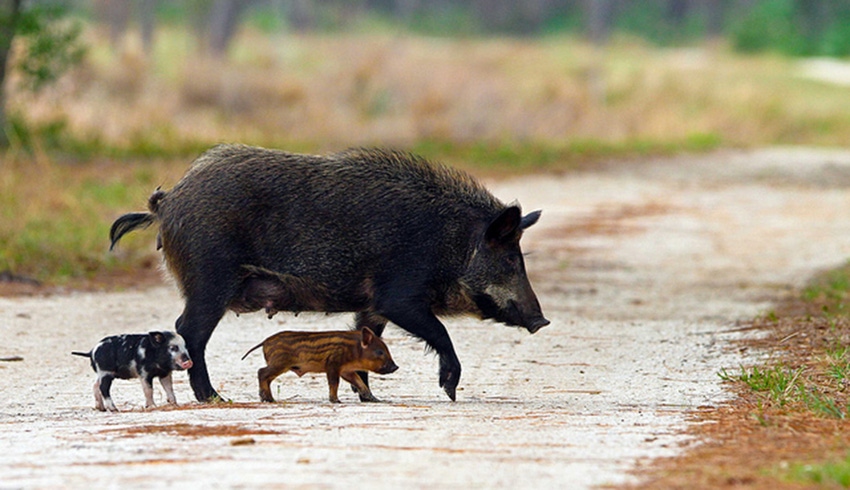Making a dent in Missouri’s feral hog population
Due to the destructive behavior of this invasive species, it’s essential that the public understand why feral hogs must be eliminated.
November 5, 2018

Source: Missouri Department of Conservation
This year is shaping up to be a banner year for the harvest of feral hogs in Missouri, as so far, the Missouri Department of Conservation’s feral hog strike team has tallied up a total of 7,339 feral hogs removed by the MDC, partner agencies and private landowners through September. That compares to 6,561 feral hogs taken last year.
Crews in southeast Missouri removed 3,849 feral hogs, which is where the highest density of feral hogs occurs. The Ozark region removed 2,358 and the Southwest region removed 823 feral hogs. St. Louis region removed 186 feral hogs, Kansas City Region removed 116 feral hogs and Northeast Region removed one. The highest densities of feral hogs occur south of Interstate 44, with very few feral hog sightings in the north portion of the state.
“We’ve been very strategic in our efforts, focusing on removal of whole groups of feral hogs at a time, before moving onto another area,” says Mark McLain, MDC’s feral hog elimination team leader. “This strategic approach is important because if we leave even a few feral hogs behind in an area, they can reproduce quickly and put us back where we started.”
McLain says it’s essential that the public understand why feral hogs must be eliminated.
“Feral hogs are a destructive, invasive species that don’t belong here; they’re not a native species,” McLain says. “They out-compete native wildlife for habitat and food. For example, places with a lot of feral hogs will see their wild turkey and deer populations diminish.”
McLain adds that feral hogs are known to carry diseases that could possibly spread to humans, pets and livestock. He hopes the message that hunting is not an effective method for eliminating feral hog populations is starting to catch on.
“For over 20 years, unregulated hunting of feral hogs was allowed in Missouri, during which time our feral hog population expanded from a few counties to over 30 counties,” he says.
In 2017, MDC, the Corps of Engineers and the LAD Foundation established regulations against feral hog hunting on lands owned and managed by these three organizations. Other agencies have passed regulations similar to the MDC’s to eliminate hog hunting on land they own.
“A persistent piece of this story is continued illegal releases of feral hogs, which establishes populations and further spreads the problem,” McLain says. “This is illegal and when caught, those who release feral hogs face hefty fines.”
McLain says MDC is partnered with many agricultural and environmental groups as well as hundreds of private landowners, who are all committed to eliminating feral hogs from Missouri. Landowners and the public are a crucial element of this effort, especially since most land in Missouri is privately owned.
“Landowners who’ve experienced feral hogs on their land have learned that hunting feral hogs pushes them onto neighboring property, which causes problems for their neighbors,” McLain says.
When neighboring landowners try to control feral hogs through hunting, the hogs simply travel back and forth between the properties, escaping and causing more damage. Trapping with no hunting interference is the best method to eliminate them. Landowners can seek help from the MDC and USDA such as technical advice, on-site visits, loaning equipment and training.
Feral hogs are not wildlife and are a serious threat to fish, forests and wildlife as well as agricultural resources. Feral hogs damage property, agriculture and natural resources by their aggressive rooting of soil in addition to their trampling and consumption of crops as part of their daily search for food.
Feral hogs have expanded their range in the United States from 17 to 38 states over the past 30 years. Their populations grow rapidly because feral hogs can breed any time of year and produce two litters of one to seven piglets every 12 to 15 months. Feral hogs are also known to carry diseases such as swine brucellosis, pseudorabies, trichinosis and leptospirosis, which are a threat to Missouri agriculture and human health.
Click here to report feral hog sightings or damage in Missouri.
You May Also Like



